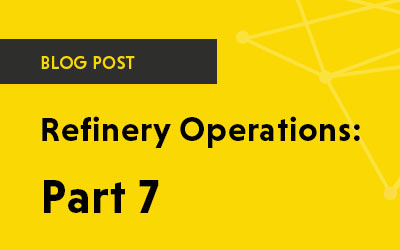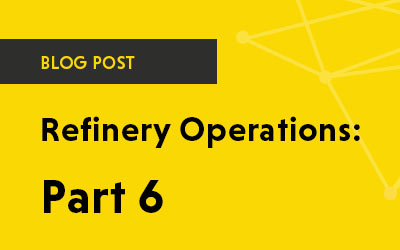Refinery
Removal of Atmospheric Tower Deposits
Atmospheric tower deposits cause reduced crude flow and lower the quality of overhead products. Regular chemical cleaning maintenance can increase product quality.

Chemicals Utilized
Atmospheric Tower Process
The separation of crude oil into various distillate streams begins in the atmospheric tower. This is achieved by sorting the crude oil based on the boiling point ranges. For example, light gases exit the top of the tower. And, heavy asphalt exits the tower bottom. During this stage, deposits can become an issue.
1
Crude oil leaves the desalter and goes to the atmospheric tower.
2
Then, the pre-heat exchangers and furnace heat the crude to between 700° and 900°F.
3
Next, the hot crude oil begins to distill into various fractions.
4
Finally, each sorted stream goes on to other equipment stages and units for further processing.
What Problems do the Atmospheric Tower Cause?
Atmospheric tower deposits cause several problems. Such as, the pre-heat exchangers can foul with heavy organic deposits and coke. As a result, the exchangers have reduced heat exchange capacity. Similarly, the exchanger bundles can plug with a mixture of iron, silica and organics. Included in the organics are asphaltenes, waxes and some linear and branched polymers. As a result, the exchangers have reduced crude flow.
Additionally, the many interior trays and packed sections of the atmospheric tower can foul with heavy organic deposits. Thus, leading poor contact between vapors rising through the tower and the liquid. This reduces the quality of the overhead products. Also, reboilers and reflux condensers foul with the same deposits.
Finally, the atmospheric tower may additionally have high H2S and pyrophoric iron. Additionally, flammable organics may be present. These are a major safety concern as they are a fire hazard.

Our Chemical Cleaning Solution
Fouling and deposits can be dissolved using chemistries. In fact, removal of deposits can be either online or offline. This applies to both the pre-heat exchanger fouling and the atmospheric tower deposits. As a result, the below chemistries will increase flow in both units. In addition, the atmospheric tower will see an increase in the quality of the separated products.
1
Dissolve Heavy Organics
Application of FQE® Solvent-H+ is the first step. As a result, the chemical dissolves the organic fouling into permanent liquid form. In addition, the dissolved solvent can be re-purposed within the refinery or sold. As a result, there is increased flow because of the dissolved deposits.
Application Details
While FQE Solvent-H+ can be applied with a steam flow, we recommend using a circulation method. Because, these towers encounter complicated recycle loops and side draw. Equally important, consideration should be given to incorporate this step into the normal cool down stage that occurs when the unit is going off-line. Finally, if the unit is cleaned offline, drain the dissolved organic deposits from it.
2
Decontaminate Gases
Equally important, the tower must be decontaminated before humans can safely enter. To start, add both FQE H2S Scavenger and FQE LEL-Vapor into the tower together, as they are designed to work at the same time. Accordingly, FQE H2S Scavenger will neutralize the dangerous levels of hydrogen sulfide. And, FQE LEL-Vapor will decontaminate and degas the tower.
3
Neutralize Pyrophoric Materials
Finally, the application of FQE Pyrophoric occurs. As a result, there is a neutralization of the flammable gases. As a result, the tower is safe to enter.



